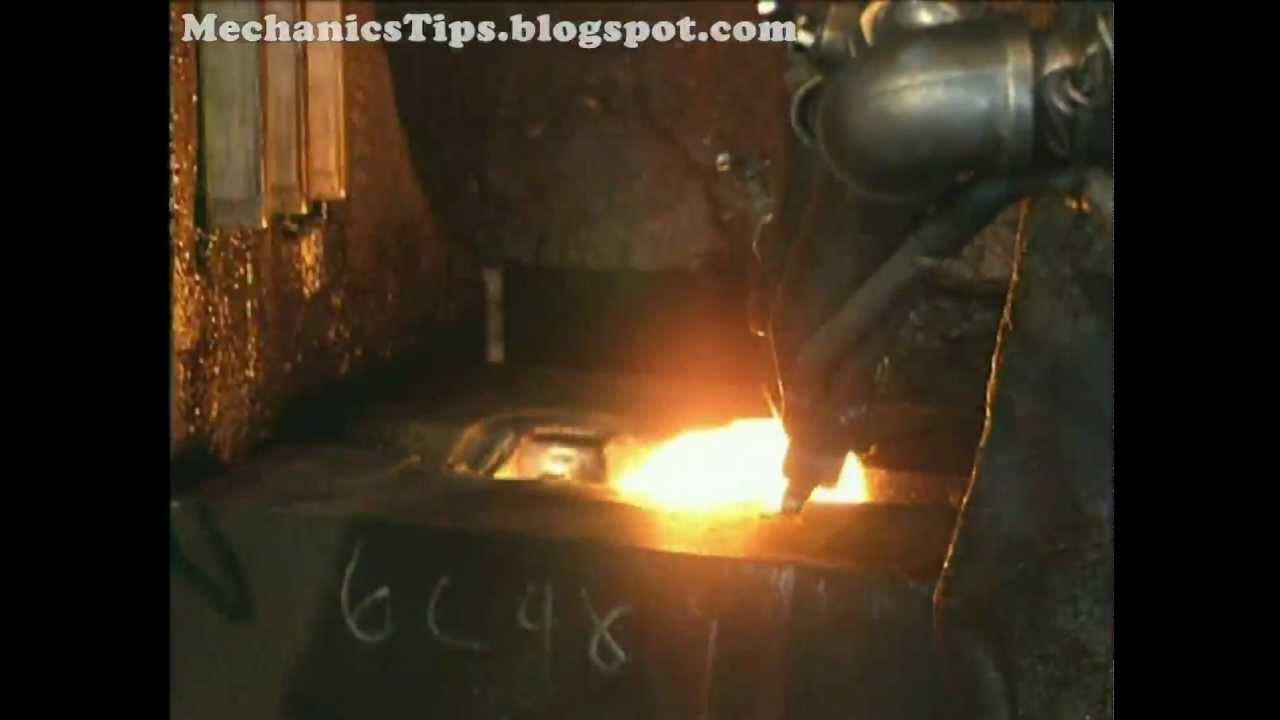Proses Manufaktur - Pengantar Proses Pembentukan Logam - Intro to Metal Forming #BangDosen
Summary
TLDRIn this video, Marihot Nainggolan introduces the process of metalworking, specifically focusing on metal forming. The script explores key concepts such as hot and cold working, deformation processes, and various techniques like rolling, forging, extrusion, and drawing. The importance of material properties, such as tenacity and resilience, is emphasized, as well as the role of energy and temperature in the metal forming process. Challenges like friction, energy consumption, and the impact of temperature on material shaping are also discussed. The session serves as an informative overview of how metal is manipulated to create various shapes and products.
Takeaways
- 😀 Metal forming is a key manufacturing process involving the shaping of metals through plastic deformation.
- 😀 There are two primary types of metalworking: hot working (done at high temperatures) and cold working (done at room temperature).
- 😀 Hot working involves heating metals above the recrystallization temperature, making them easier to shape with less energy.
- 😀 Cold working requires more energy because the metal is shaped at room temperature and becomes harder through strain hardening.
- 😀 Metal forming processes include rolling, forging, extrusion, and drawing, each serving different manufacturing needs.
- 😀 The material's properties, such as resilience and tenacity, are crucial in determining how easily it can be deformed in metalworking.
- 😀 Energy usage is higher in cold working due to the need to overcome the metal's hardness at room temperature.
- 😀 Friction is both an aid and a challenge in metal forming processes, influencing tool wear and material flow.
- 😀 Lubrication is critical in reducing friction during processes like wire drawing to avoid material breakage and tool wear.
- 😀 The relationship between temperature and material properties plays a significant role in determining the efficiency and outcome of metal forming processes.
- 😀 Cold working processes lead to strain hardening, which increases material strength but can also make it more difficult to shape if overdone.
Q & A
What is metal forming in manufacturing?
-Metal forming is a group of manufacturing processes that involve shaping a material, typically metal, through various methods like rolling, forging, extrusion, and drawing. The goal is to alter the shape of the material without changing its composition.
What are the two main parts of the metal deformation process?
-The two main parts of the metal deformation process are hot working and cold working. Hot working is performed at high temperatures, while cold working is done at or near room temperature.
What is the role of energy in metal forming processes?
-Energy is crucial in metal forming because the process involves applying force to shape the material. For thicker or larger materials, more energy is required, especially in cold working processes. Hot working processes typically require less energy due to the material's increased ductility at higher temperatures.
What is plastic deformation, and why is it important in metal forming?
-Plastic deformation refers to the permanent change in the shape of a material when it is subjected to stress beyond its yield point. In metal forming, plastic deformation is essential because it allows the material to be shaped without breaking.
How does temperature affect the metal forming process?
-Temperature plays a key role in metal forming. In hot working, the material is heated to a temperature above its recrystallization point, making it easier to shape. Cold working, on the other hand, is done at lower temperatures and often requires more force due to the increased strength of the material at room temperature.
What is the difference between hot working and cold working?
-Hot working is performed above a material's recrystallization temperature, which makes the material more ductile and easier to shape. Cold working is done below this temperature, resulting in a stronger, harder material, but it requires more force to shape.
What are the advantages of hot working over cold working?
-Hot working offers several advantages, including easier shaping of large or complex parts, lower forces required, and the elimination of issues like strain hardening. However, it requires heating, which can increase energy costs and lead to dimensional inaccuracies.
What are the disadvantages of cold working?
-Cold working requires more energy because the material is harder at room temperature. It also leads to strain hardening, where the material becomes increasingly difficult to shape with each pass, necessitating a re-annealing process to restore its ductility.
What is extrusion, and how does it work?
-Extrusion is a process where a material, such as aluminum, is forced through a mold or die to create long shapes with uniform cross-sections. For example, when aluminum is extruded through a circular die, it forms a cylindrical rod.
What is the impact of friction in metal forming processes?
-Friction plays a critical role in metal forming, as it can affect the ease of the process. High friction can increase wear on tools and reduce efficiency. Lubrication is often used to reduce friction, improving the process and extending tool life.
Outlines

此内容仅限付费用户访问。 请升级后访问。
立即升级Mindmap

此内容仅限付费用户访问。 请升级后访问。
立即升级Keywords

此内容仅限付费用户访问。 请升级后访问。
立即升级Highlights

此内容仅限付费用户访问。 请升级后访问。
立即升级Transcripts

此内容仅限付费用户访问。 请升级后访问。
立即升级5.0 / 5 (0 votes)






